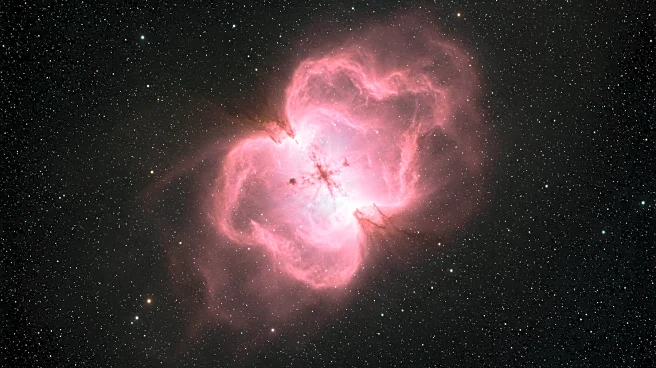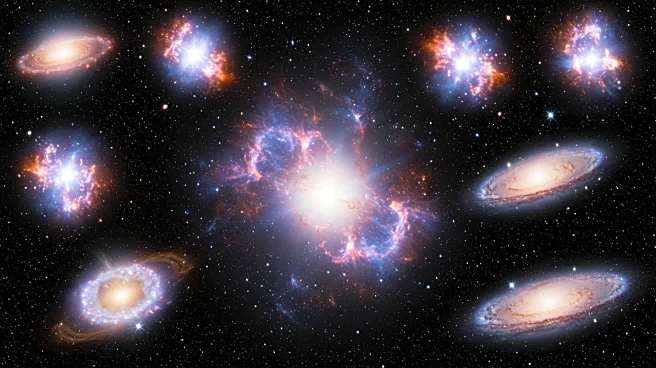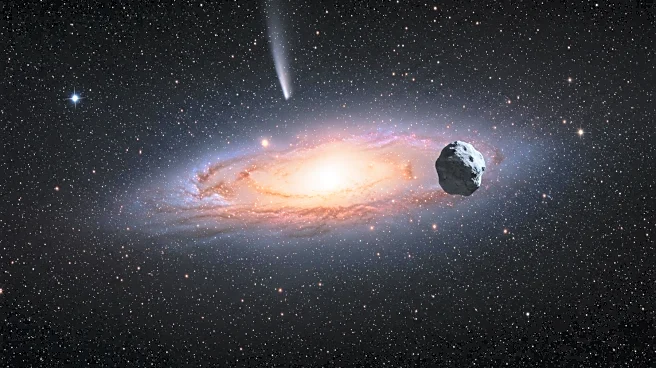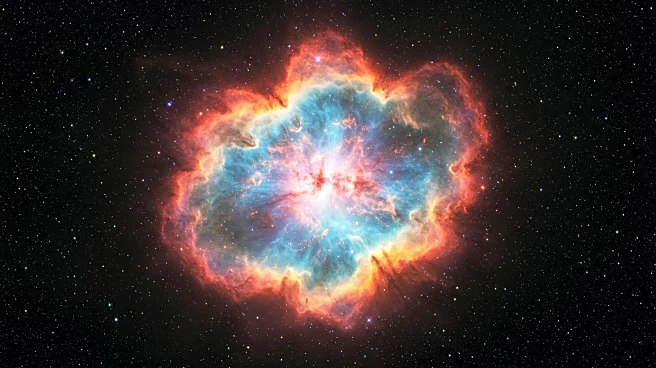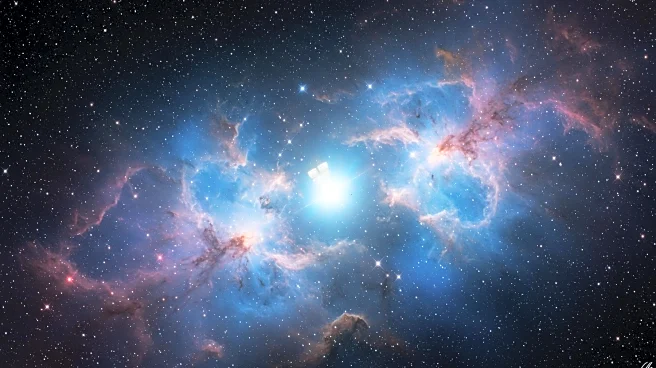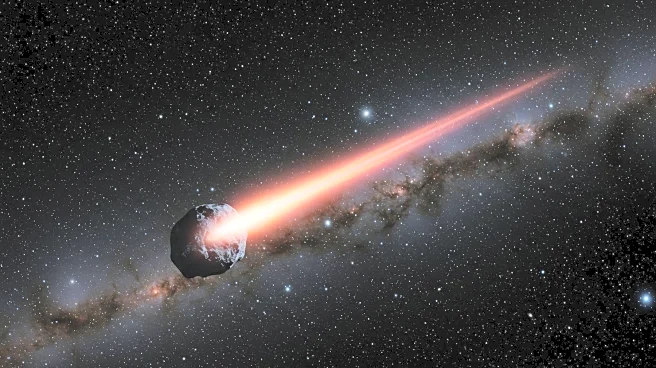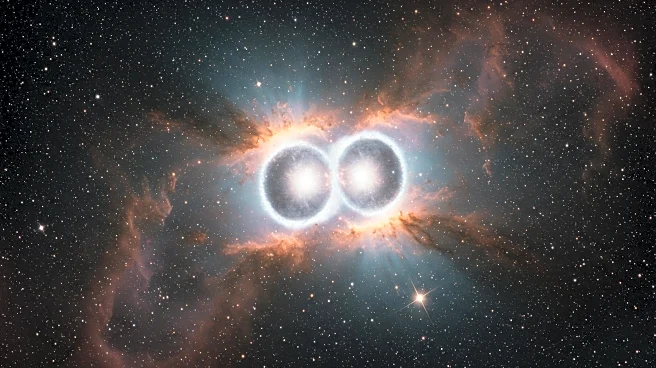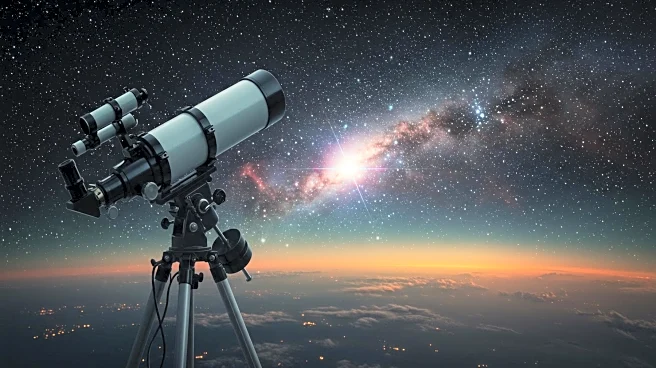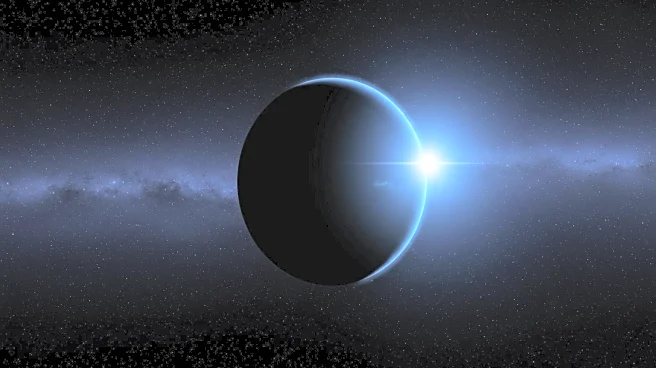What's Happening?
NASA and ESA's Hubble Space Telescope has released a new image of the spiral galaxy NGC 2835, located 35 million light-years away in the constellation Hydra. The image highlights pink nebulae scattered across the galaxy's spiral arms, visible due to H-alpha light emissions. These nebulae are areas of intense star formation, showcasing the birth and death of stars. The H-alpha light provides astronomers with detailed insights into the cosmic processes within the galaxy, including the interaction between stars and the interstellar medium. This observation is part of Hubble's ongoing campaign to study nearby galaxies and catalog nebulae.
Why It's Important?
The Hubble image offers a deeper understanding of stellar evolution and galactic dynamics. By capturing H-alpha light, astronomers can trace the life cycle of stars and study the chemical makeup of nebulae. This data is crucial for understanding how galaxies evolve and how stars contribute to their surroundings. The insights gained from these observations can help researchers understand the evolution of the Milky Way and other galaxies. The cataloging of nebulae across multiple galaxies will serve as a foundation for future research on galactic evolution.
What's Next?
Hubble's ongoing survey aims to catalog more than 50,000 nebulae across 19 nearby galaxies, including NGC 2835. This project will provide a comprehensive map of star-forming regions and contribute to the understanding of galaxy evolution. Researchers will continue to analyze the data to uncover patterns in nebulae distribution and the processes governing star formation. The insights gained may help predict the future of the Milky Way and other galaxies.
Beyond the Headlines
The study of nebulae and star formation has broader implications for understanding the universe's evolution. The interaction between stars and the interstellar medium shapes the structure of galaxies and influences future generations of stars. By studying these processes, scientists can gain insights into the environmental conditions necessary for star formation and the role of massive stars in enriching their surroundings.
